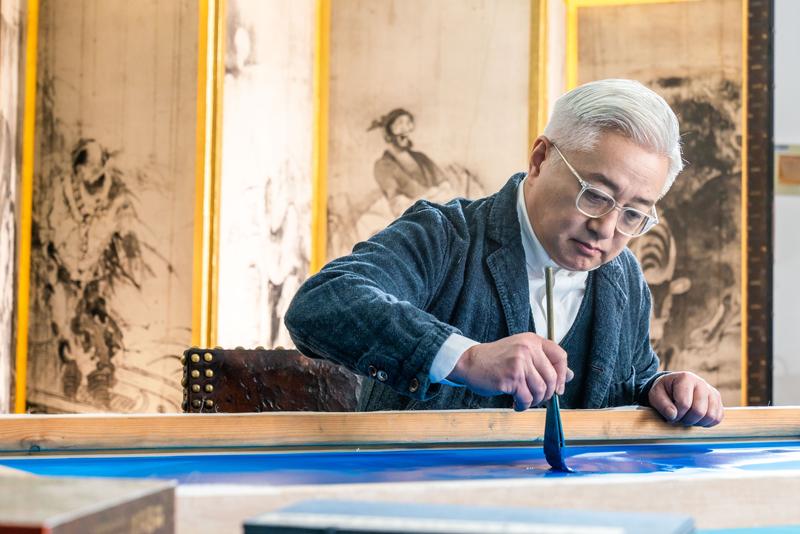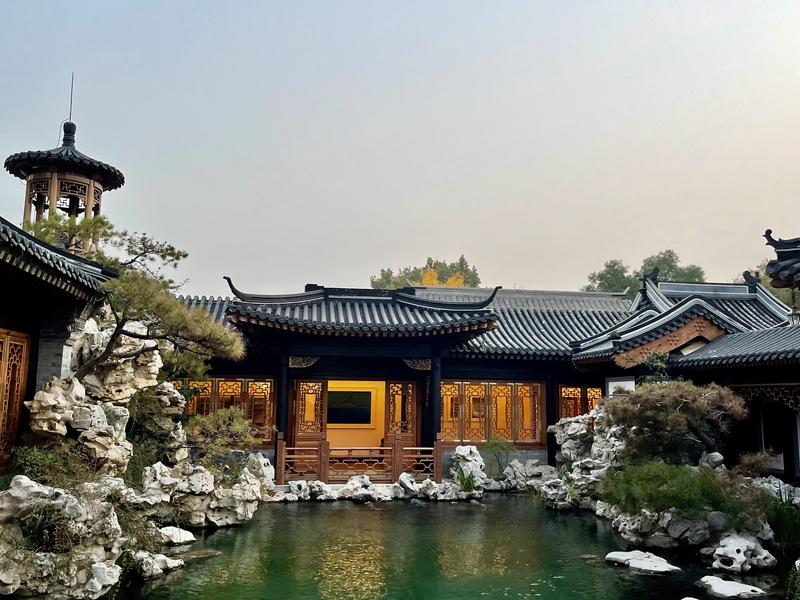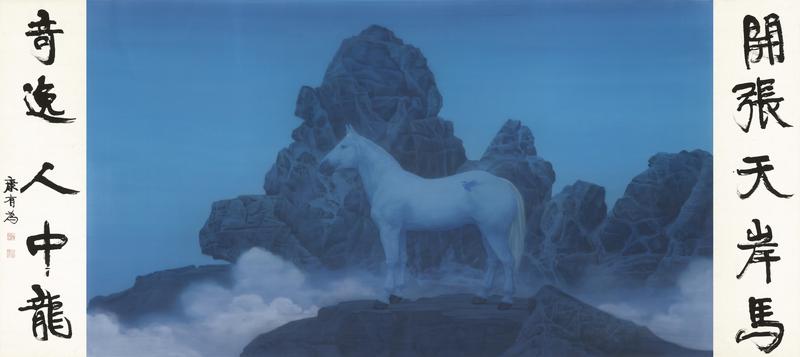Artist Xu Lei blends classical Chinese and Western techniques into his dreamlike works, Lin Qi reports.
 Ink artist Xu Lei is known for his figurative gongbi style. (PHOTO PROVIDED TO CHINA DAILY)
Ink artist Xu Lei is known for his figurative gongbi style. (PHOTO PROVIDED TO CHINA DAILY)
Ink artist Xu Lei says his ongoing solo exhibition, Xing Hui (A Flash of Inspiration), at the Nanchizi Museum is one of the best shows on his paintings and methods of creation ever.
The museum, tucked in a quiet alley near the Forbidden City in central Beijing, occupies a small courtyard built in the style of classical Chinese gardens in Suzhou and Wuxi cities in Jiangsu province.
The vintage residential gardens, decorated with pavilions, hollowed rocks, ponds, plants and artworks, allowed people to live in privacy and promote high culture, as well as reflect ancient Chinese views on interactions between human and the surroundings, nature and the universe.
One can feel similar artistic refinement and philosophical and cultural views while going through the ink-color paintings at Xu's exhibition, which runs through Feb 28.
Xu views the show as a chance for onlookers "to get a big picture from the details, to gain significance from commonplace", and as a journey to take people to the past, bring them back to the present in a world suffering from the pandemic and also look to the future.
 The Nanchizi Museum in central Beijing is built in the style of classical Chinese gardens. (PHOTO PROVIDED TO CHINA DAILY)
The Nanchizi Museum in central Beijing is built in the style of classical Chinese gardens. (PHOTO PROVIDED TO CHINA DAILY)
Xu rose to fame with his works on paper, in which he pays delicate attention to the figurative gongbi style, a long-standing technique in classical Chinese painting, to present accurate, meticulous details. He draws inspiration from the art of the Song (960-1279) and Ming (1368-1644) dynasties and retains the intellectual grace and philosophical beauty, as well as a sentiment of mystery and seclusion.
Xu has given the style of painting a modern context by introducing elements from Western history and art, and modern cultures. By doing so, he renders in his work a symbolic, surreal and conceptual touch that has made him a leading Chinese contemporary artist.
"Xu is a representative and inspirational artist in the realm of modern Chinese painting," says Yan Hong, deputy director of the Nanchizi Museum. "His distinctive approach to gongbi paintings has blended elements of the East and the West, the tradition and modern.
"His well-recognized works are often characterized with an atmosphere of calmness and self-distancing, showing a lineage from the cultural temperament of intellectuals in ancient China."
The exhibition highlights the recurring motifs and ideas that Xu presents in his works, in a metaphoric way. At the center is Thousands of Mountains in a Midnight Dream, a work to demonstrate Xu's sought-after unified harmony through the juxtaposition of different things seemingly related.
 Thousands of Mountains in a Midnight Dream, an ink work by Xu Lei. (PHOTO PROVIDED TO CHINA DAILY)
Thousands of Mountains in a Midnight Dream, an ink work by Xu Lei. (PHOTO PROVIDED TO CHINA DAILY)
Marked with a signature tone of blue in Xu's work, the painting depicts a robust horse standing on a mountain path among clouds and mist. And it goes with a replica of a couplet written in the calligraphic style by Kang Youwei, a reformer and scholar who lived in the late Qing Dynasty (1644-1911), that reads, "as vigorous as a well-bred horse, as extraordinary as an outstanding man".
In this work, Xu uses the gongbi brushwork to depict the horse and the figurative technique of Western oil painting to draw mountains, staging a poetic, dreamlike scene.
The moon-themed paintings that Xu is known for are also on show. He details vividly the lunar craters while he places the satellite in an unrealistic setting, for example, half-sunken in sea as it is depicted in the shown painting Moon Rising From the Sea. The idea is drawn from a famous eighth-century Chinese poem.
Xu explains that when people in the past gazed at the moon, they often thought about Chang'e, the moon goddess in Chinese mythology, and her pet rabbit, while now people view the planet more from a scientific viewpoint.
"The imaginations arising from ancient mythology may be given away to observations of the craters. Still, the moon interests me. It is an eternal theme for me to look for renewed representations," he says.
Sun Dongdong, the exhibition curator, says that in Xu's paintings, the moon is not only a symbol with metaphoric meaning in Chinese culture, but also something seen by people around the world, therefore, a universal symbol of exchanges.
Contact the writer at linqi@chinadaily.com.cn


